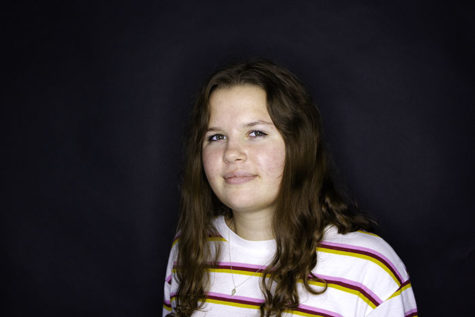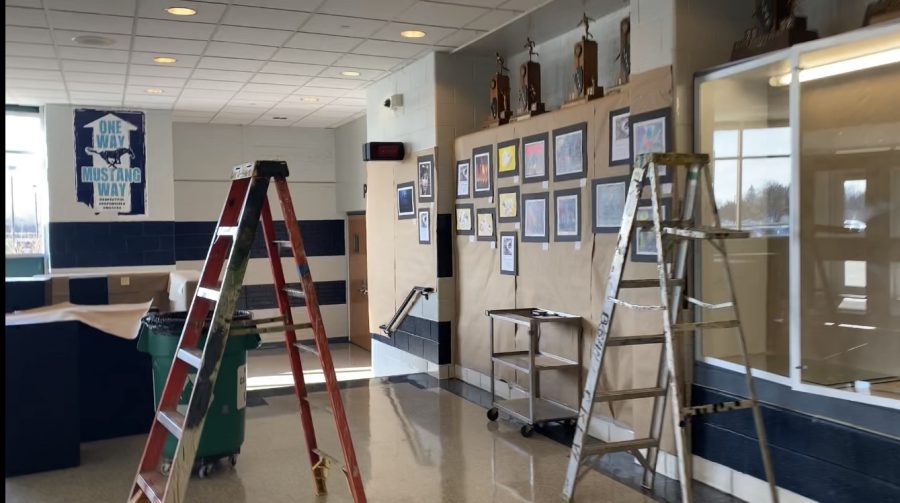AP photography: What is expected from students
A look back at the Winter Art Show, where all AP art student’s work is highlighted.
Click! An AP photography student snaps her camera to capture the perfect shot of a ladybug sunning itself on a lilypad. This isn’t the only AP art class offered here at DGS — AP design, AP studio art 3D design, AP music theory and AP computer design are many of the art based AP classes offered to students.
This AP photography class shares one thing in common for students — the freedom to create art that is completely their artists style. Senior Kaylee Kushta has been an AP photography student for three years. She explains how she incorporates her own style into the photos she creates.
“I’m definitely not the typical artsy person, but I definitely try to have my photos reflect me. I often shoot natural things over people and [I] don’t like to do staged things… I like to enhance detail in all of my images and turn down the saturation so you can focus on little things. [This] is something I try to do as well in day to day life ,” Kushta said.
This year, a change has been made in the AP photography — a new teacher. Samantha Wascher is new to DGS this year, making it her first time teaching these classes. She explains how she has been running them so far this year.
“This year I am running AP a little differently than it has been run in the past. AP photo studio [photography] has its own specific curriculum, and I am challenging the students to keep up with the expectations of a college level class,” Wascher said.
Because AP classes are harder than non-APs, they are run very differently. Wascher explains the differences between her AP class and her regular class.
“The AP class curriculum requires students to begin the semester by marketing themselves as artists, establishing and promoting their style and brand of work, all while they are developing their portfolio concept. Photo studio curriculum invites students to create a mini portfolio, but once students reach the AP level, they are expanding on a portfolio concept, which they will work on over the course of the year. They are doing this all while branding themselves as artists. I expect my AP students to be able to handle the heavy workload, grow from critique, and I expect them to explore without being guided to do so… I hold very high expectations for my AP class, and I know this helps push them even further than they may have thought possible,” Wascher said.
Kushta believes that art class can be for anyone at DGS, all you need to do is just give them a try.
“They [art classes] are low commitment and you never know if you will end up loving the course. For me specially I’m going to school for it and went in just to get my fine arts credit! It’s a great creative outlet and I think it’s worth a shot for everyone,” Kushta said.
The art classes that are AP can be used for college credits. Some students who are in art classes are hoping to go into art as a future career of study, while others are taking art classes simply because it’s something they enjoy. Senior Skyler Groveau is one of the students who sees art as a hobby.
“I see art as a hobby and lifestyle. For some people it is all they want to do in life. They see it in everything… I have many other interests so for me I just see it as a hobby… When I need to relieve stress I tend to pick up my camera and express myself through that. It keeps me sane and calm,” Groveau said.
Senior Tara Pikey has taken many art classes; she has taken all levels of drawing and all levels of ceramics. Though she has never taken photography, she shares the same difference in expectations for when it comes to AP art classes. She talks about what different expectations she has had.
“The difference between AP and non-AP is the workload. In AP it is expected of you to hand-in extra projects that are assigned. For example, in drawing studio AP students have to hand in the four required concentration pieces along with two extra AP pieces,” Pikey said.
With COVID-19 making art classes virtual, these students will have to continue to work hard to reach all their goals. By the end of the semester, each student will have hopefully received the college credit they had been working towards, as well as taking home all the projects they have been working on.
“I am here to help them succeed, and hopefully discover a passion for the arts! I also like to showcase the many ways students can be successful after high school and college in the arts. There are so many business opportunities in the arts, and not many people realize that,” Wascher said.


